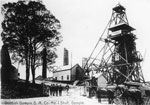No.1 Scottish Gympie Mine & Battery
IF YOU ARE USING A MOBILE DEVICE AND THE GALLERY BELOW IS NOT Gympie Region Heritage Trail website is packed full of interesting details about the Gympie, Mary Valley, Cooloola Coast, Goomeri & Kilkivan. Take a journey back in time and explore the Gympie Region rich history which included gold mining, dairy, beef, timber, farming, rail & many more iconic attractions and events that shaped the region into what it is today!
All content copyright © 2025 Gympie Regional Council, unless otherwise stated. For more information,
copyright notice, disclaimer and privacy statement…

| ||||||||||||||
























